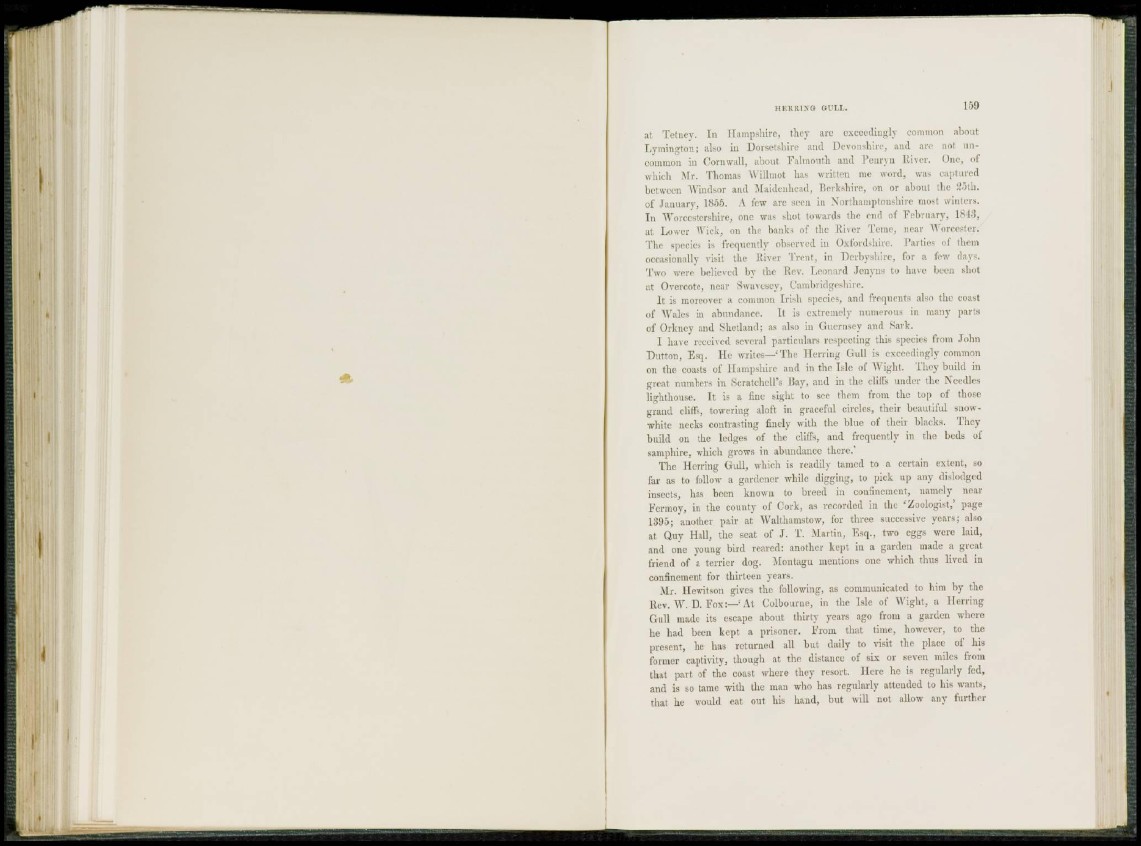
i t Tetney. Iu Hampshire, they are exceedingly common about
Lyniington; also in Dorsetshire and Devonshire, aud are not uncommon
in Cornwall, about Falmouth and Penryn River. <)ne, of
which M r. Thomas W ilhnot has written me word, was captured
between Windsor and Maidenhead, Berkshire, on or about the 25th.
of January, 1855. A few are seen in Northamptonshire most winters.
In Worcestershire, one was shot towards the end of February, 1848,
at Lower Wick, on the banks of the River Temc, near Worcester.
The species is frequently observed in Oxfordshire. Parties of them
occasionally visil the River Trent, in Derbyshire, for a few days.
Two were believed by the Rev. Leonard Jcnyns to have been shot
at Overcote, near Swavesey, Cambridgeshire.
I t is moreover a common Irish species, and frequents also the coast
of Wales in abundance. It is extremely numerous in many parts
of Orkney and Shetland; as also in Guernsey and Nark.
1 have received several particulars respecting this species from John
Dutton, Esq. He writes—'The Herring Gull is exceedingly common
on the coasts of Hampshire and in the Isle of Wight. They build in
great numbers in Scratchell's Bay, and in the cliffs under the Needles
lighthouse. It is a fine sight to see them from the top of those
grand cliffs, towering aloft in graceful circles, their beautiful snowwhite
necks contrasting finely with the blue of their blacks. They
build on the ledges of the cliffs, and frequently in the beds of
samphire, which grows in abundance there.*
The Herring Gull, which is readily tamed to a certain extent, so
far as to follow a gardener while digging, to pick up any dislodged
insects, has been known to breed in confinement, namely near
Fcrmoy, in the county of Cork, as recorded in the 'Zoologist/ page
1395; another pair at Walthamstow, for three successive years; also
at Quy Hall, the seat of J. T. Martin, Esq., two eggs were laid,
and one young bird reared: another kept in a garden made a great
friend of a terrier dog. Montagu mentions one which thus lived in
confinement for thirteen years.
Mr. Hewitson gives the following, as communicated to him by the
Rev. W. D. Fox:—'At Colbourue, in the Isle of Wight, a Herring
Gull made its escape about thirty years ago from a garden where
he had been kept a prisoner. From that time, however, to the
present, he has returned all but daily to visit the place of Ins
former captivitv, though at the distance of six or seven miles from
that part of the coast where they resort. Here he is regularly fed,
and is so tame with the man who has regularly attended to his wants,
that he would eat out his hand, but will not allow any further